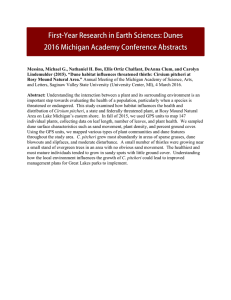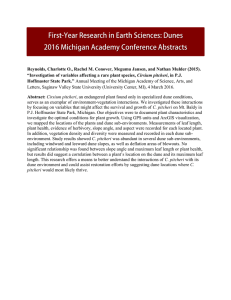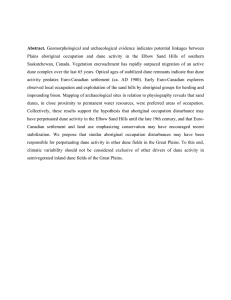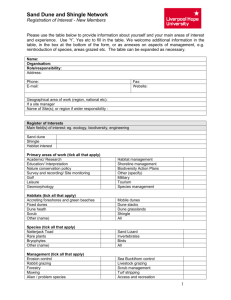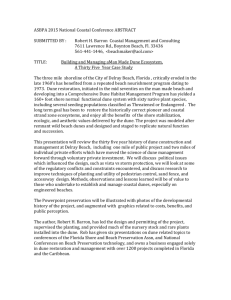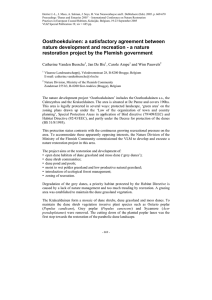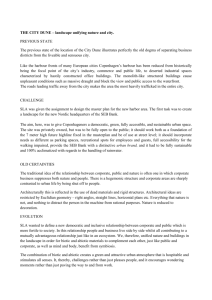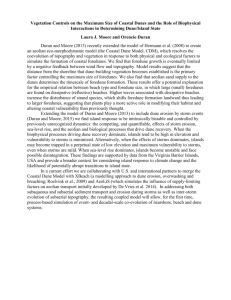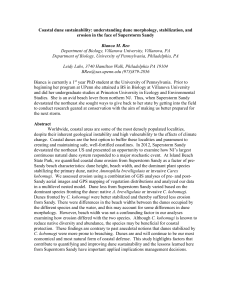Biodiversity Worksheet: Measuring Species Diversity
advertisement
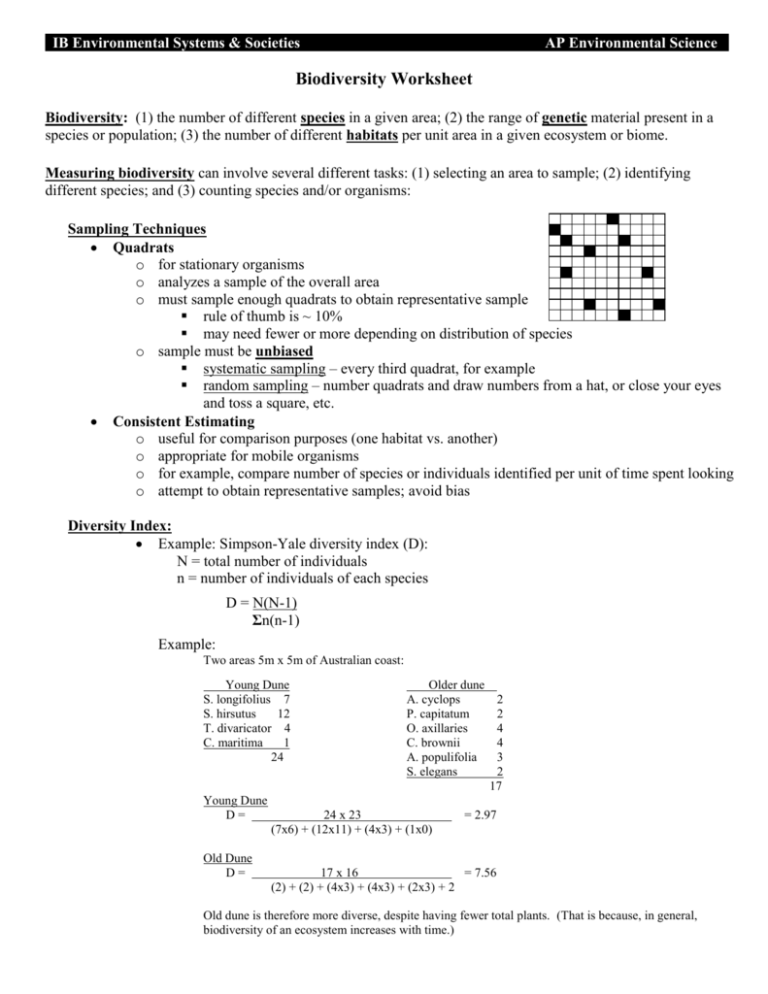
IB Environmental Systems & Societies AP Environmental Science Biodiversity Worksheet Biodiversity: (1) the number of different species in a given area; (2) the range of genetic material present in a species or population; (3) the number of different habitats per unit area in a given ecosystem or biome. Measuring biodiversity can involve several different tasks: (1) selecting an area to sample; (2) identifying different species; and (3) counting species and/or organisms: Sampling Techniques Quadrats o for stationary organisms o analyzes a sample of the overall area o must sample enough quadrats to obtain representative sample rule of thumb is ~ 10% may need fewer or more depending on distribution of species o sample must be unbiased systematic sampling – every third quadrat, for example random sampling – number quadrats and draw numbers from a hat, or close your eyes and toss a square, etc. Consistent Estimating o useful for comparison purposes (one habitat vs. another) o appropriate for mobile organisms o for example, compare number of species or individuals identified per unit of time spent looking o attempt to obtain representative samples; avoid bias Diversity Index: Example: Simpson-Yale diversity index (D): N = total number of individuals n = number of individuals of each species D = N(N-1) Σn(n-1) Example: Two areas 5m x 5m of Australian coast: Young Dune S. longifolius 7 S. hirsutus 12 T. divaricator 4 C. maritima 1 24 Young Dune D= Old Dune D= Older dune A. cyclops P. capitatum O. axillaries C. brownii A. populifolia S. elegans 24 x 23 (7x6) + (12x11) + (4x3) + (1x0) 2 2 4 4 3 2 17 = 2.97 17 x 16 = 7.56 (2) + (2) + (4x3) + (4x3) + (2x3) + 2 Old dune is therefore more diverse, despite having fewer total plants. (That is because, in general, biodiversity of an ecosystem increases with time.) IB Environmental Systems & Societies AP Environmental Science Names: ___________________________________________________________________________________ Date: ___________________ Area 1 Area (m2): Species Name (if known, otherwise use a number) Species Description Area 2 Area (m2): Species Name (if known, otherwise use a number) Which area has more species diversity? Why? Species Description
